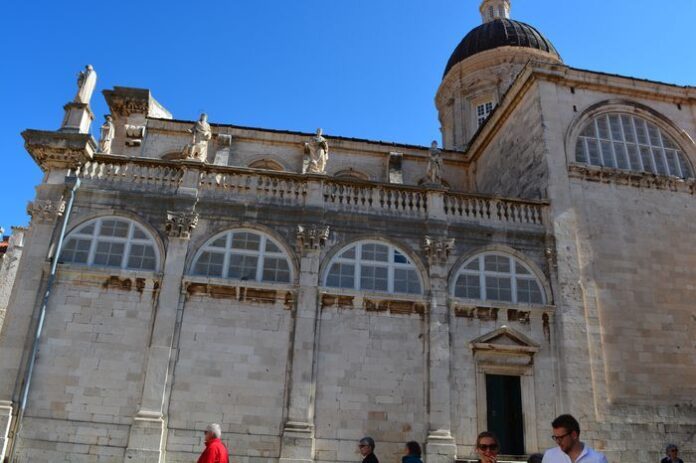The Gate of Selivria (Selivri Kapısı) and Its Historical Importance
The next major public gate in the Theodosian Walls is known today as Selivri Kapısı. It is located between the thirteenth and fourteenth towers, just north of the Gate of the Deuteron. This entrance holds a special place in the history of Constantinople Tours Sofia.
From “Selivri Gate” to “Gate of the Spring”
The name Selivri Kapısı appears shortly before the Turkish Conquest of Constantinople. The name means “Gate of Selivria” because it lies at the beginning of the road leading to the town of Selivria (modern-day Silivri).
However, before this name became common, the gate was better known as the Gate of the Pege (Greek: Πύλη τῆς Πηγῆς), meaning the Gate of the Spring. This older name referred to the famous Holy Spring of Balıklı, located about half a mile west of the gate. The name is confirmed by an inscription on the southern gate tower, which marks restoration works done in 1433 or 1438.
A Gate Close to the Holy Spring
This gate had great importance due to its close location to the Holy Spring (Pege). The spring was famous for its healing waters, shrines, and beautiful natural surroundings, including cypress trees and open meadows. It became one of the most beloved places near the city for rest and prayer.
Byzantine emperors had a palace and hunting grounds near the spring. They often spent time there, especially during the pleasant spring months. On Ascension Day, the emperor would visit the “Life-giving Spring” in a formal procession. Sometimes he would ride through the city, or take a boat to the edge of the walls by the Sea of Marmara and continue on horseback to the spring.
The emperor was usually welcomed at this gate by an elite guard unit called the Numeri. It was also after returning from a visit to the Pege that Emperor Nicephorus Phocas was attacked by an angry mob near the Forum of Constantine and the Great Palace.
A Gateway to Political Power
The gate is also remembered for key events in Byzantine military and political history. In 1261, the Byzantine general Alexios Strategopoulos entered the city through this gate and overthrew the Latin Empire, which had ruled Constantinople since 1204. The Latins had sealed the gate for protection, but a group of Byzantine attackers, helped by allies inside the city, climbed over the wall, killed the guards, broke the barrier, and opened the gates. This event restored Byzantine control under Emperor Michael VIII Palaiologos Gates in the Theodosian Walls.
In 1376, Andronikos IV Palaiologos also entered through this gate after a 32-day siege. He took the throne from his father, John V Palaiologos, in a dramatic act of betrayal.
The Gate During Ottoman Sieges
The gate continued to play a role during the final years of the Byzantine Empire. During the siege of 1422, Sultan Murad II set up his camp near the Church of the Holy Spring. Later, during the siege of 1453, a battery of three Ottoman cannons was placed near this gate and fired at the walls to break through the city’s defenses.
The Gate of the Pege, now known as Selivri Kapısı, was much more than just an entry point into the city. Its religious, cultural, and military significance made it one of the most important gates in the Theodosian Walls. It stood at the crossroads of faith, imperial tradition, and the struggles for power that shaped the fate of Constantinople.
